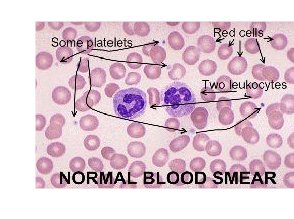SOME PILS OF HYSTORY ABOUT THE CLINICAL USE
A little bit of history
Platelets were discovered to exist as the third cellular component in blood in December 1881 after Giulio Bizzozero (1846 – 1901) (figure).
 Immediately after acute wound, while blood is going to extravasate, platelets adhere to the edge of the lesion and form a white clot together with fibrin network. This mesh promptly reduces the blood loss. In the past, it was thought that that platelets exerted mostly mechanic activity. More recently it was shown that the cytoplasmatic granule of plateletes contain a variety of molecules that are released from platelets after they become activated during the early clotting phase (figure). It was these shown that such molecules have many peculiar characteristics: 1) they attract many different type of cells to the lesion site (fibroblasts, cheratinocite, endothelial-vascular cells, stem and mesenchymal cells; 2) they stimulate the cell proliferation and the formation of new vessels (angiogenesis); 3) they induce the collagen-producing cells (fibroblasts) to the production of new collagen hence providing extra-cellular matrix deposition which is necessary for new tissue to be generated and remodeled. All these events, together with the fibrin mesh provided by the clot (gel) – which drives the cell migration within the lesion – act together to form new tissue, hence healing the lesion.
Immediately after acute wound, while blood is going to extravasate, platelets adhere to the edge of the lesion and form a white clot together with fibrin network. This mesh promptly reduces the blood loss. In the past, it was thought that that platelets exerted mostly mechanic activity. More recently it was shown that the cytoplasmatic granule of plateletes contain a variety of molecules that are released from platelets after they become activated during the early clotting phase (figure). It was these shown that such molecules have many peculiar characteristics: 1) they attract many different type of cells to the lesion site (fibroblasts, cheratinocite, endothelial-vascular cells, stem and mesenchymal cells; 2) they stimulate the cell proliferation and the formation of new vessels (angiogenesis); 3) they induce the collagen-producing cells (fibroblasts) to the production of new collagen hence providing extra-cellular matrix deposition which is necessary for new tissue to be generated and remodeled. All these events, together with the fibrin mesh provided by the clot (gel) – which drives the cell migration within the lesion – act together to form new tissue, hence healing the lesion.

 In the late 1970s’ some researcher held the idea to bring this naturally occurring process into therapy. As far as we know, it is Rosenthal who first used experimentally a platelet-fibrinogen-thrombin mixture as a corneal adhesive hence avoiding the need of suture in ocular surgery (1). A similar methods was used some year later by Fisher (2). During the 1980s, the group leaded by Knigton have published several reports of successful treatments with the autologous platelet-derived wound healing factors (platelet releasate, PDWHF) (3-5). During the 1990s, several authors has reported similar results in different clinical conditions (6-14).
In the late 1970s’ some researcher held the idea to bring this naturally occurring process into therapy. As far as we know, it is Rosenthal who first used experimentally a platelet-fibrinogen-thrombin mixture as a corneal adhesive hence avoiding the need of suture in ocular surgery (1). A similar methods was used some year later by Fisher (2). During the 1980s, the group leaded by Knigton have published several reports of successful treatments with the autologous platelet-derived wound healing factors (platelet releasate, PDWHF) (3-5). During the 1990s, several authors has reported similar results in different clinical conditions (6-14).
In 1997, Whitman and collaborators published the first report about the use of the PRP-GEL in oral surgery. Few months later (1998) Marx published the most cited and popular clinical report about the use of PRP in oral surgery. After then, myriad papers dealing with about the use of the platelet gel and of other platelet-derived BIOLOGICALS such as topical adjuvant to heal have been publlished.